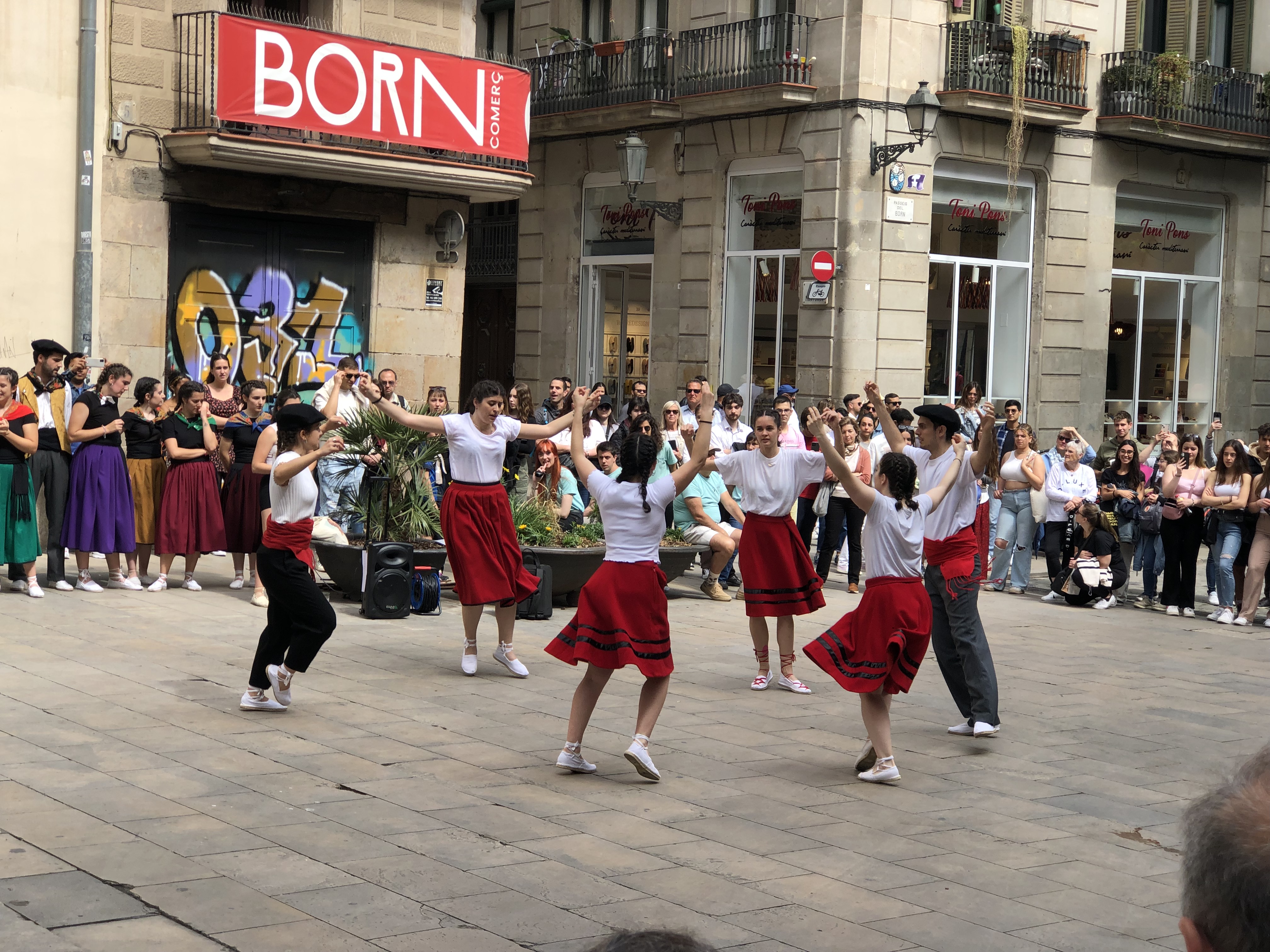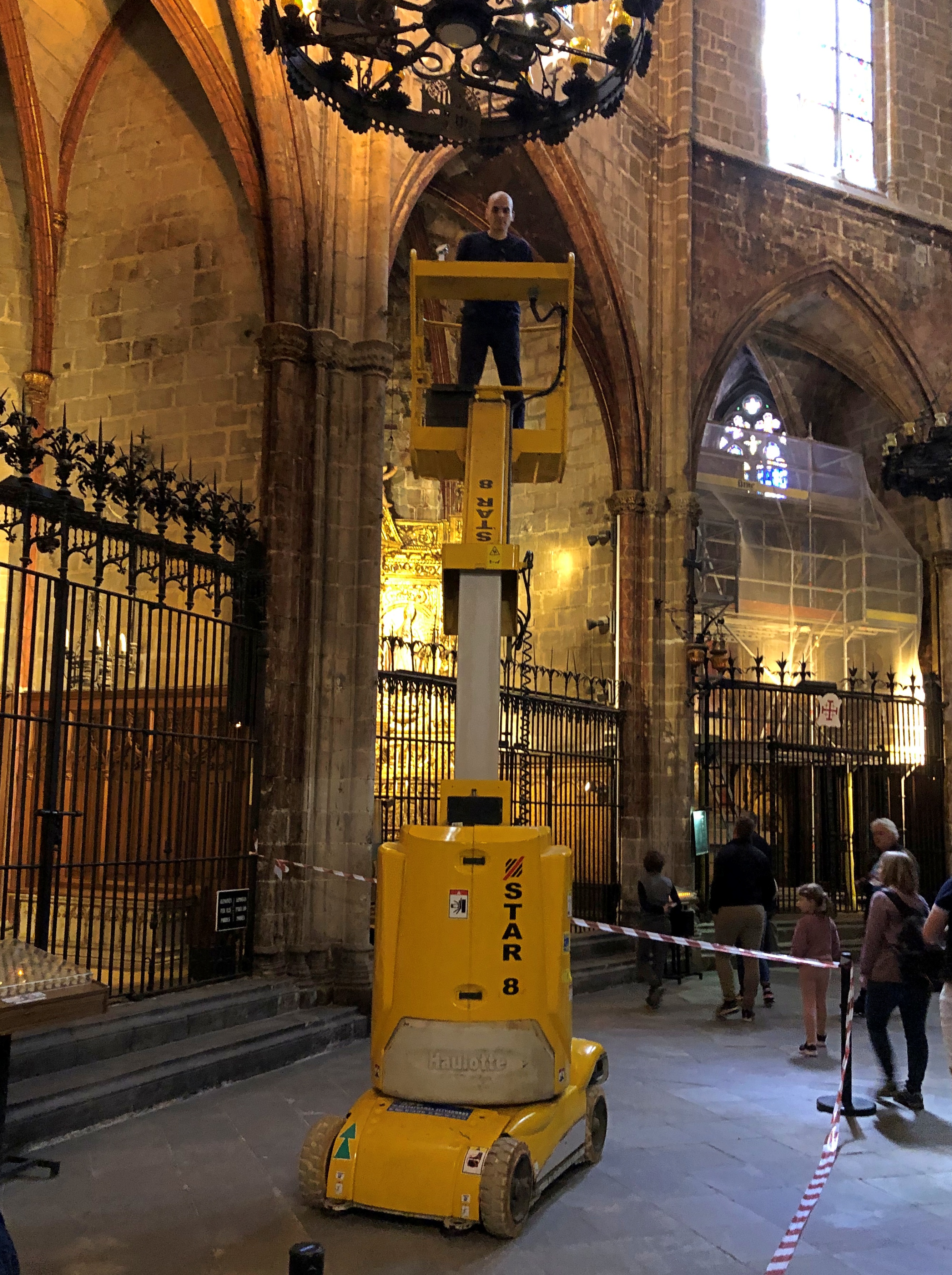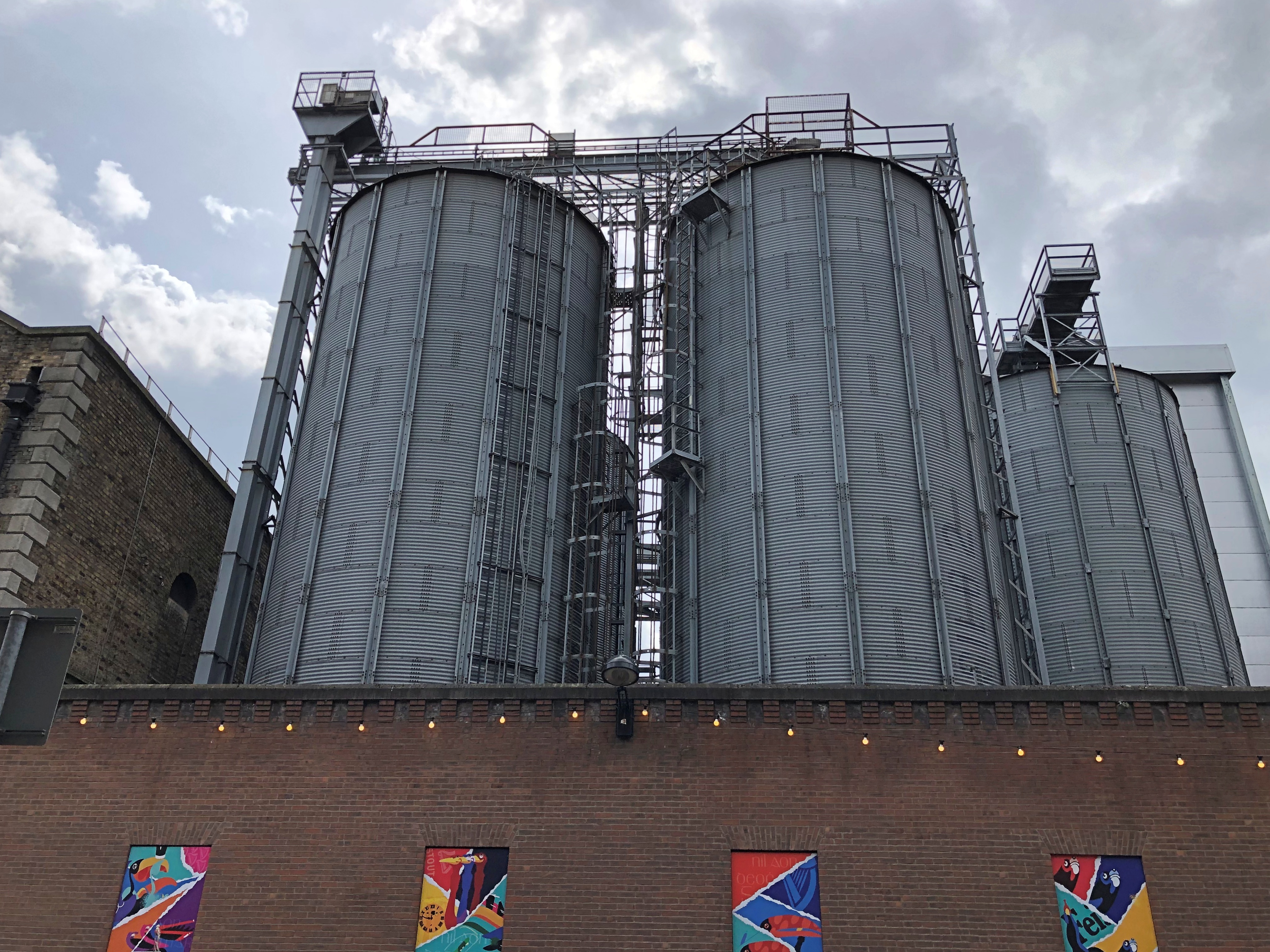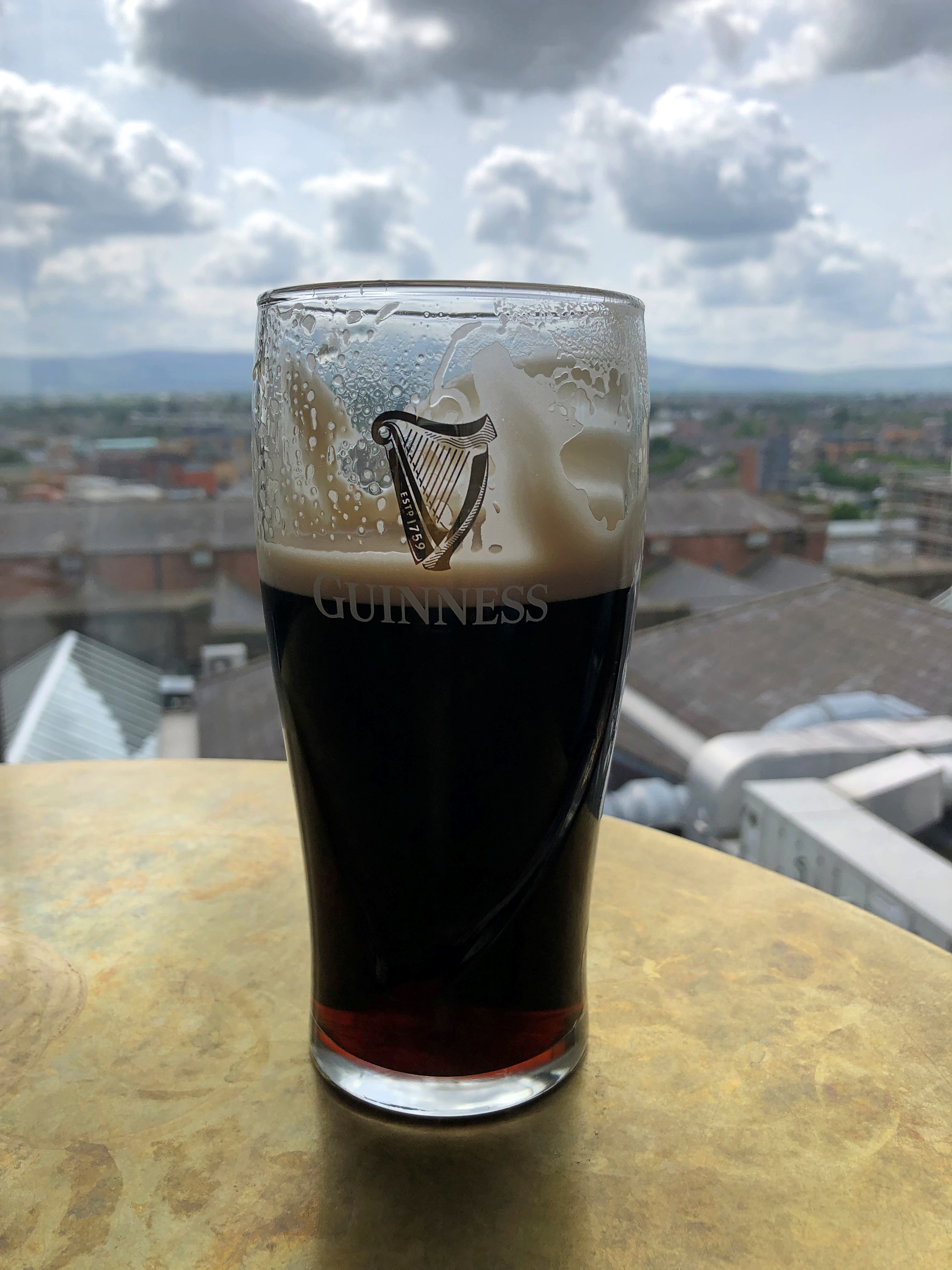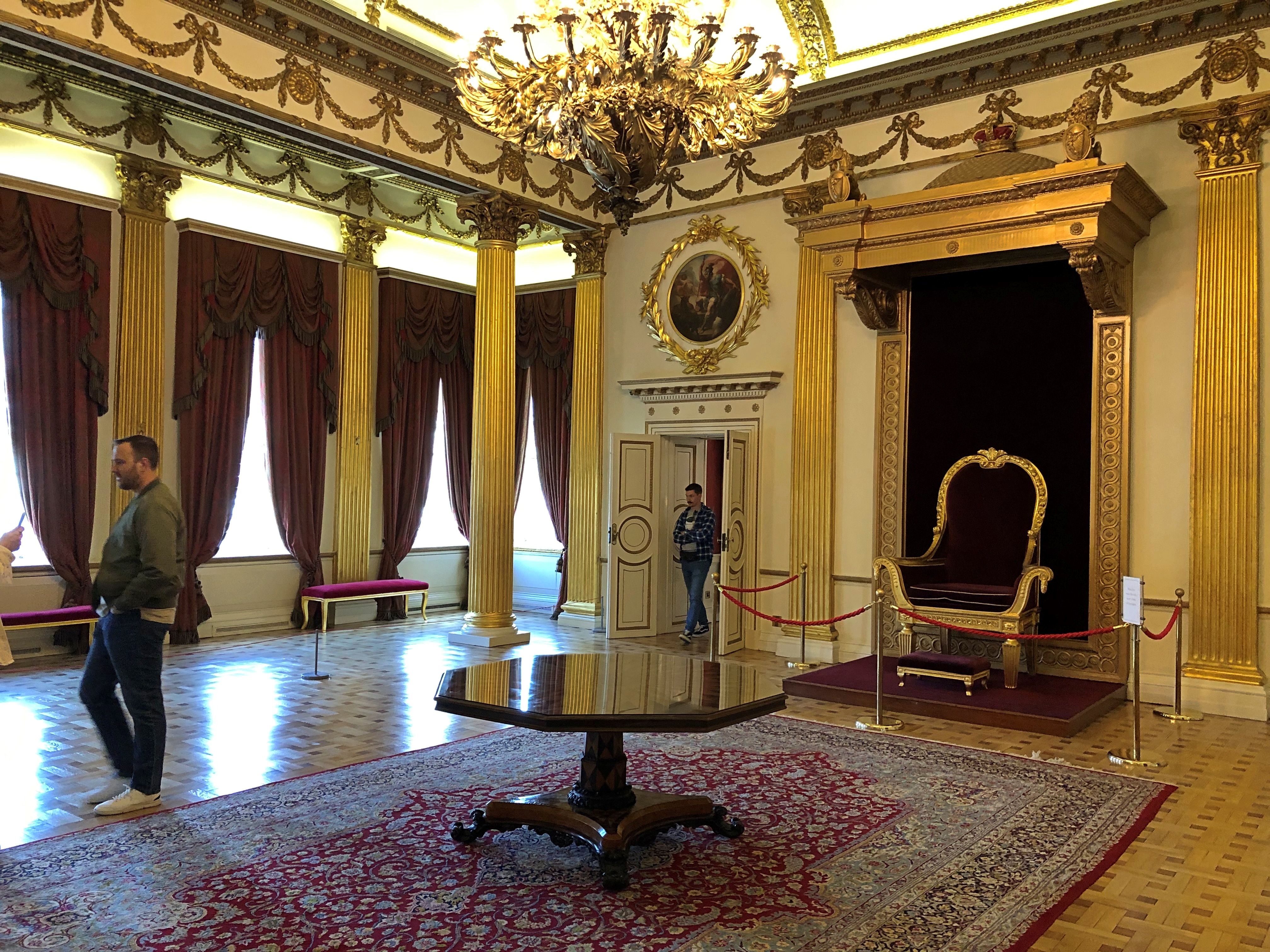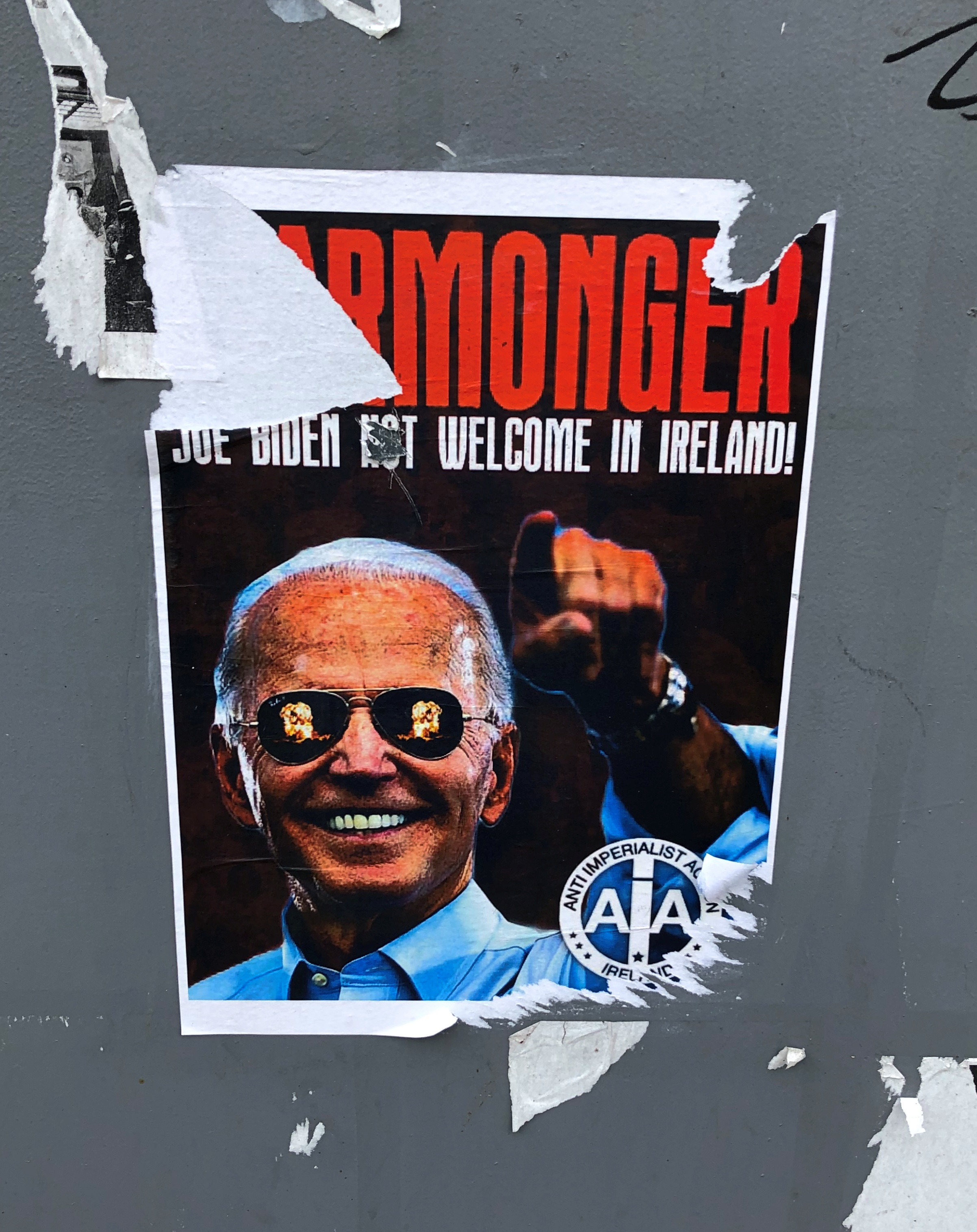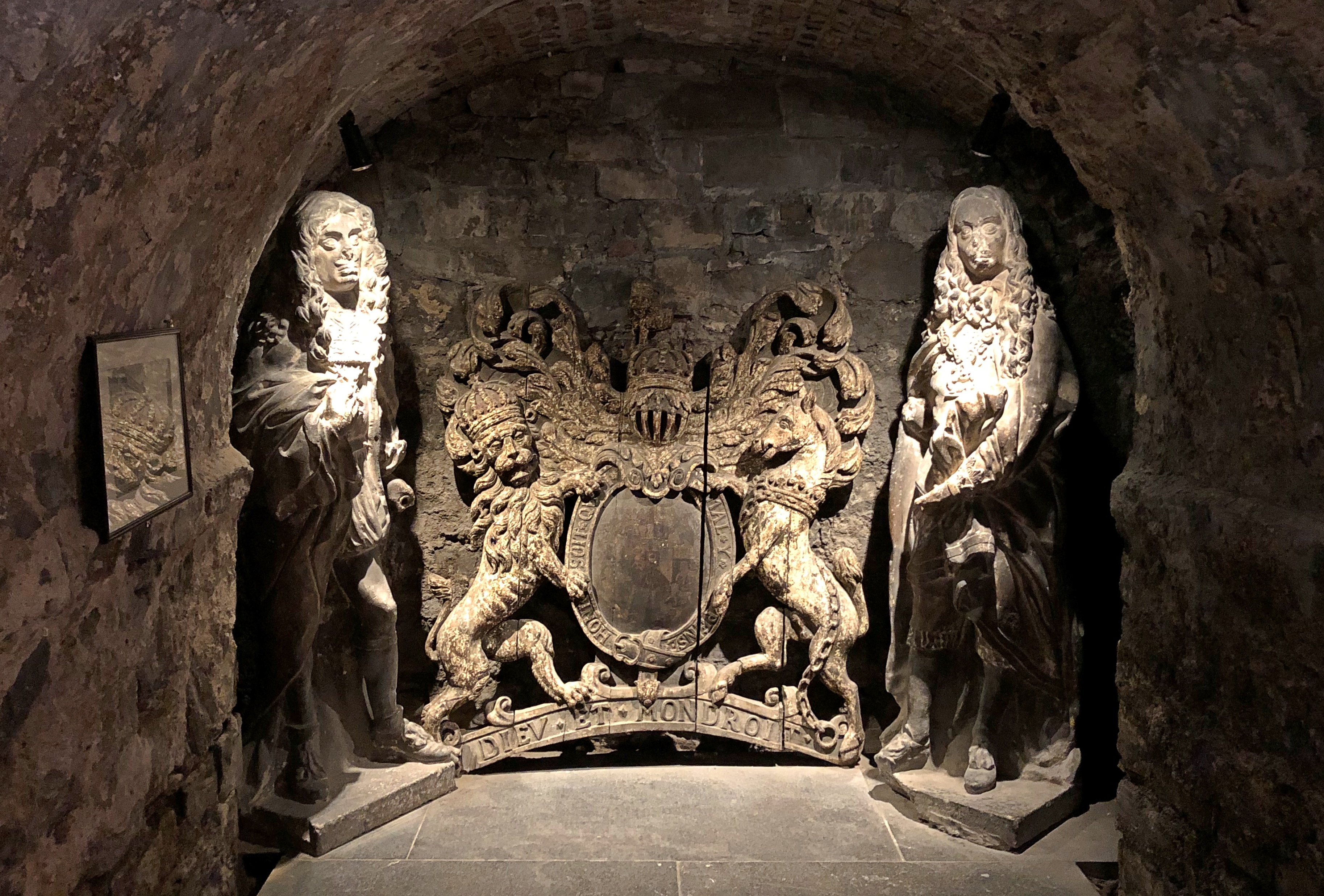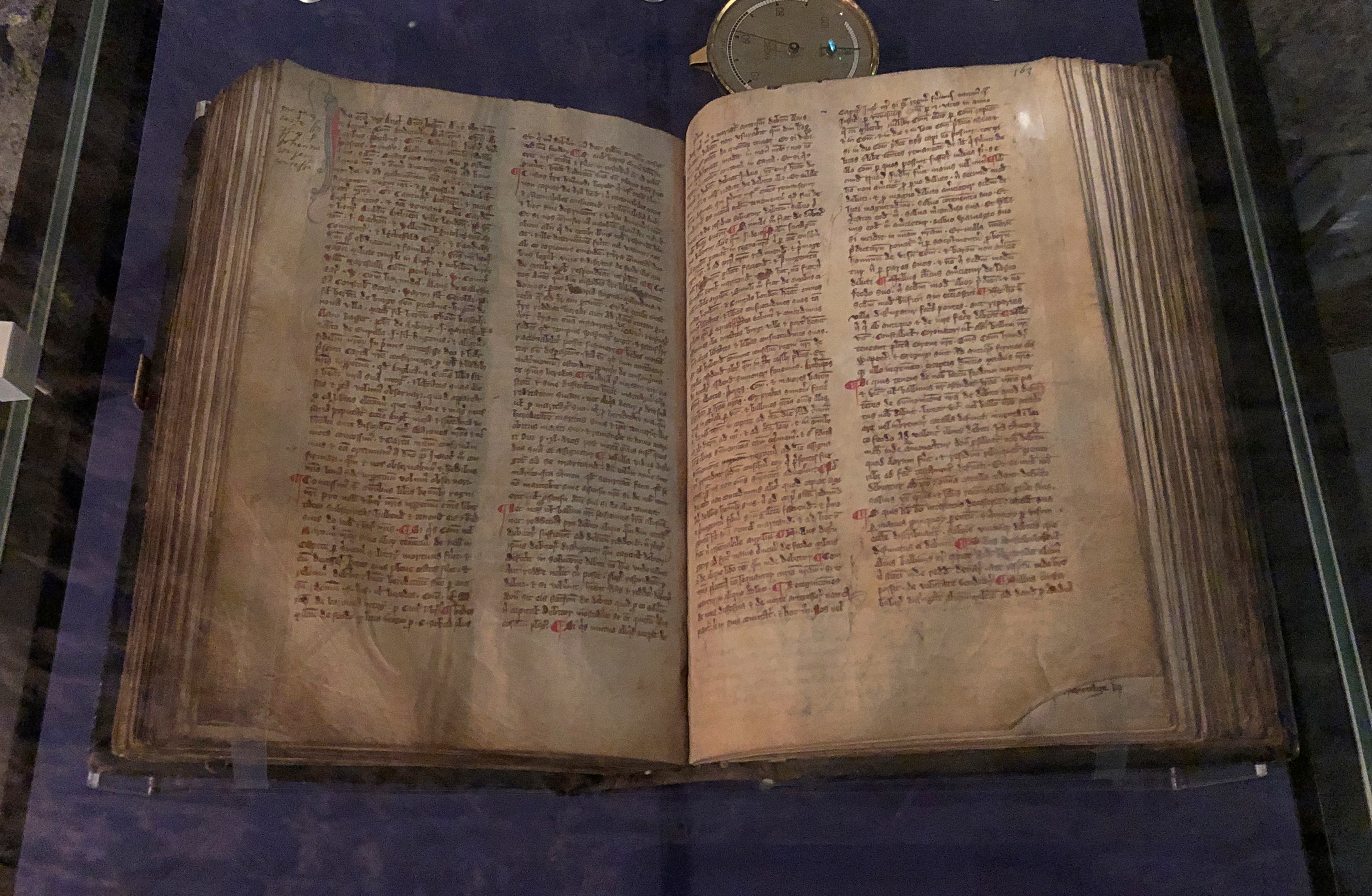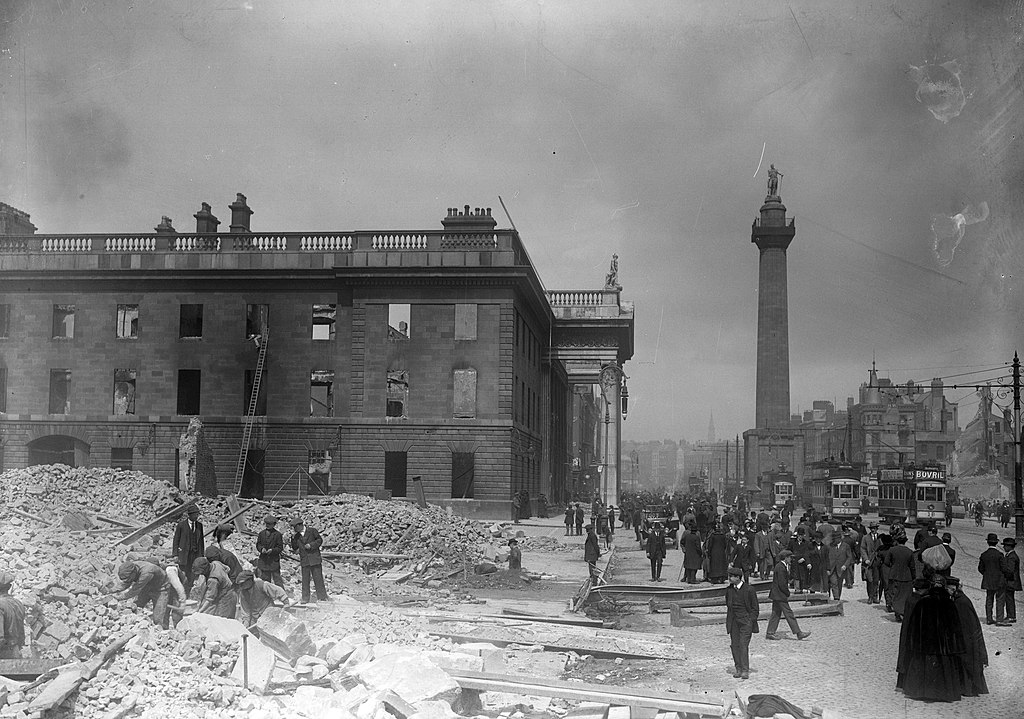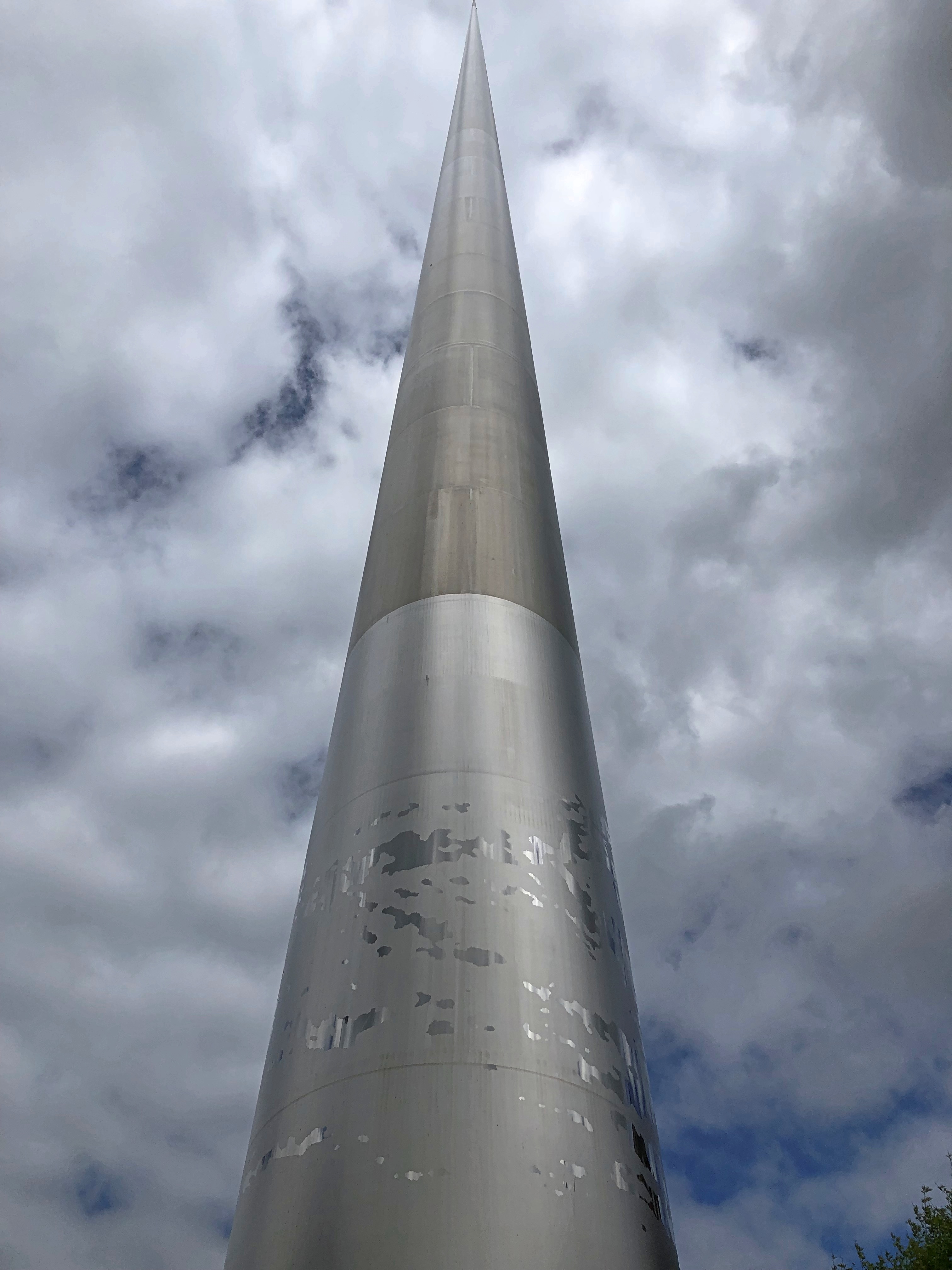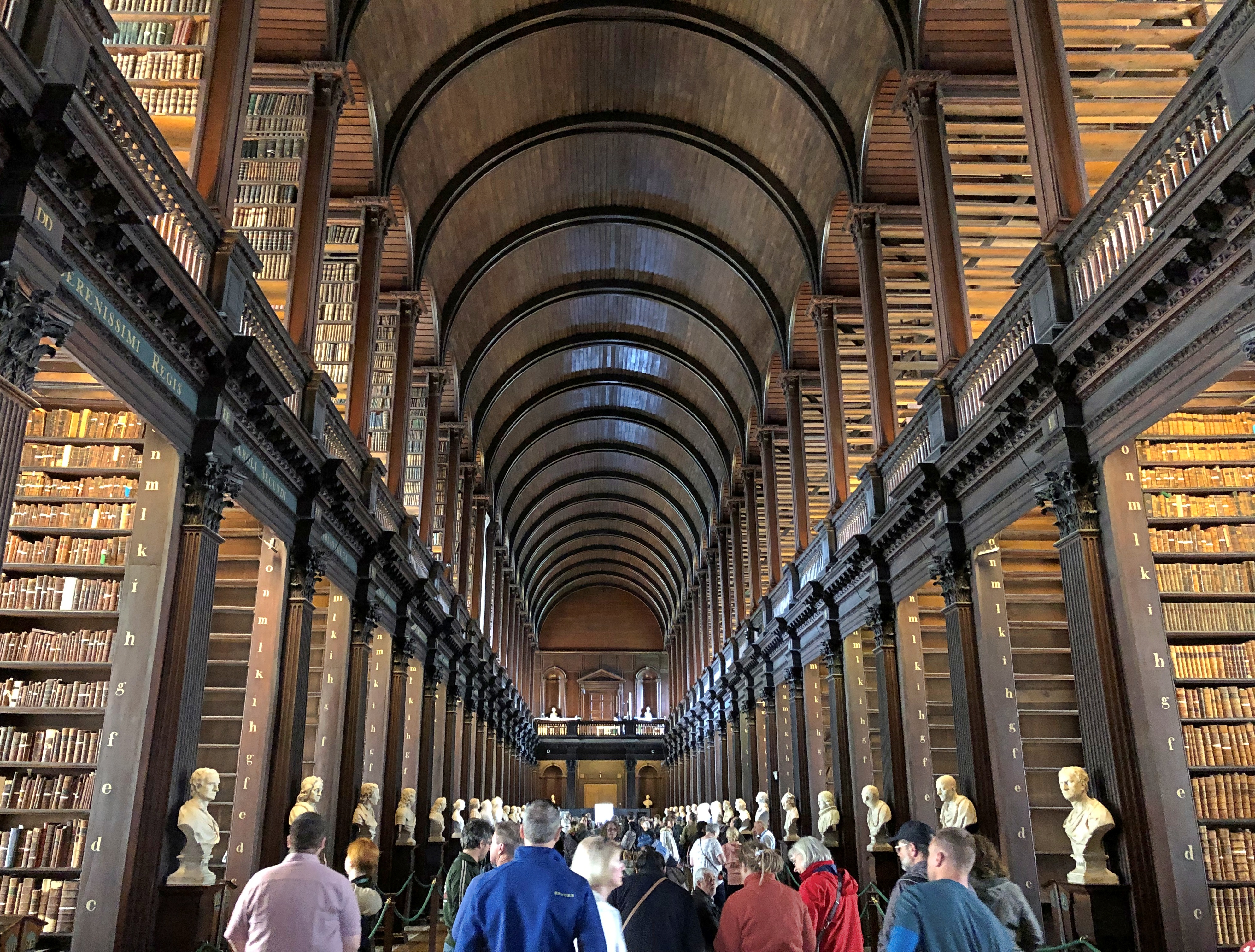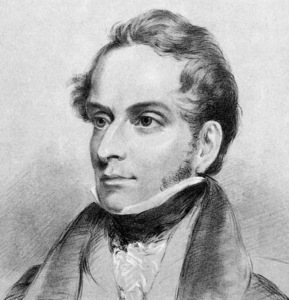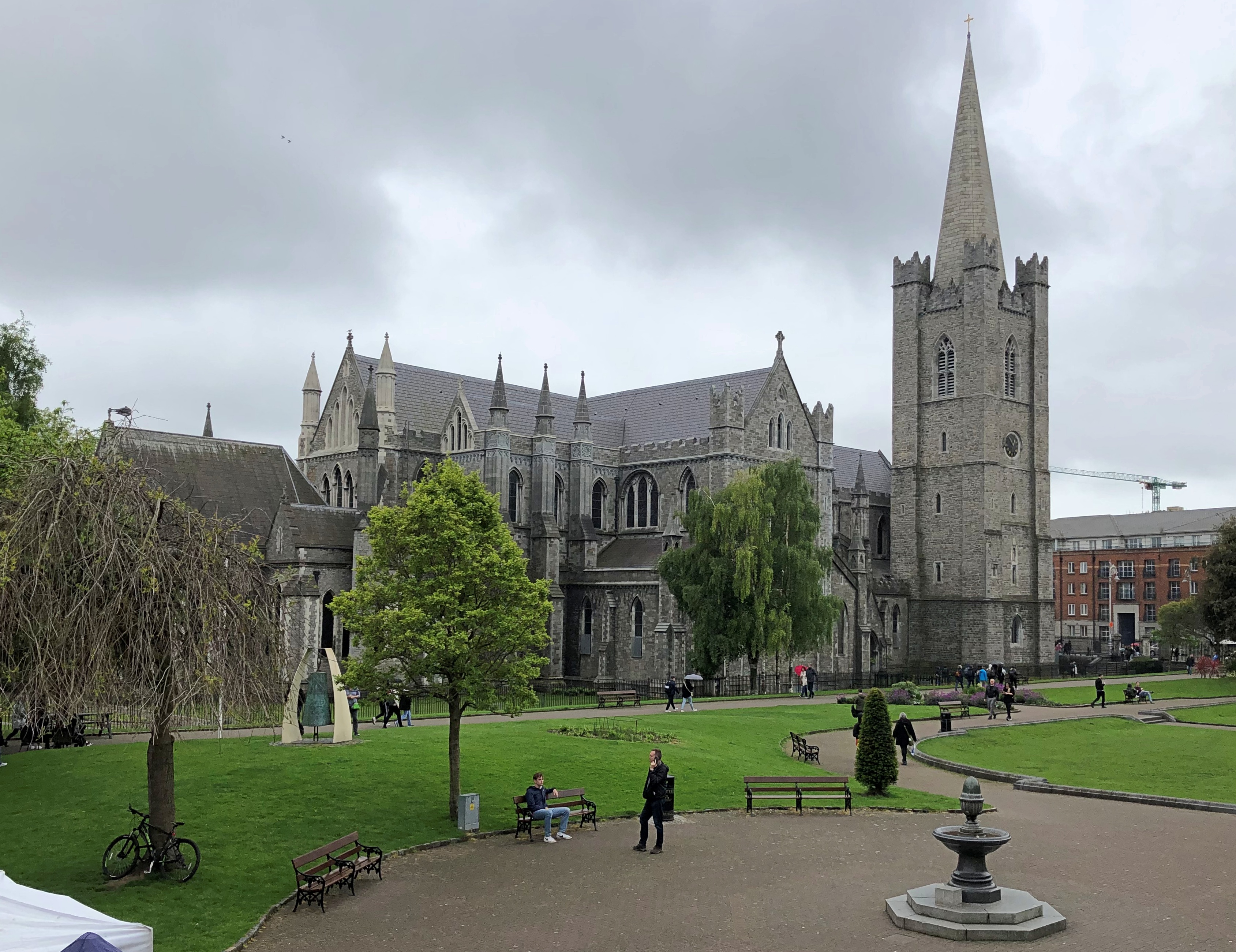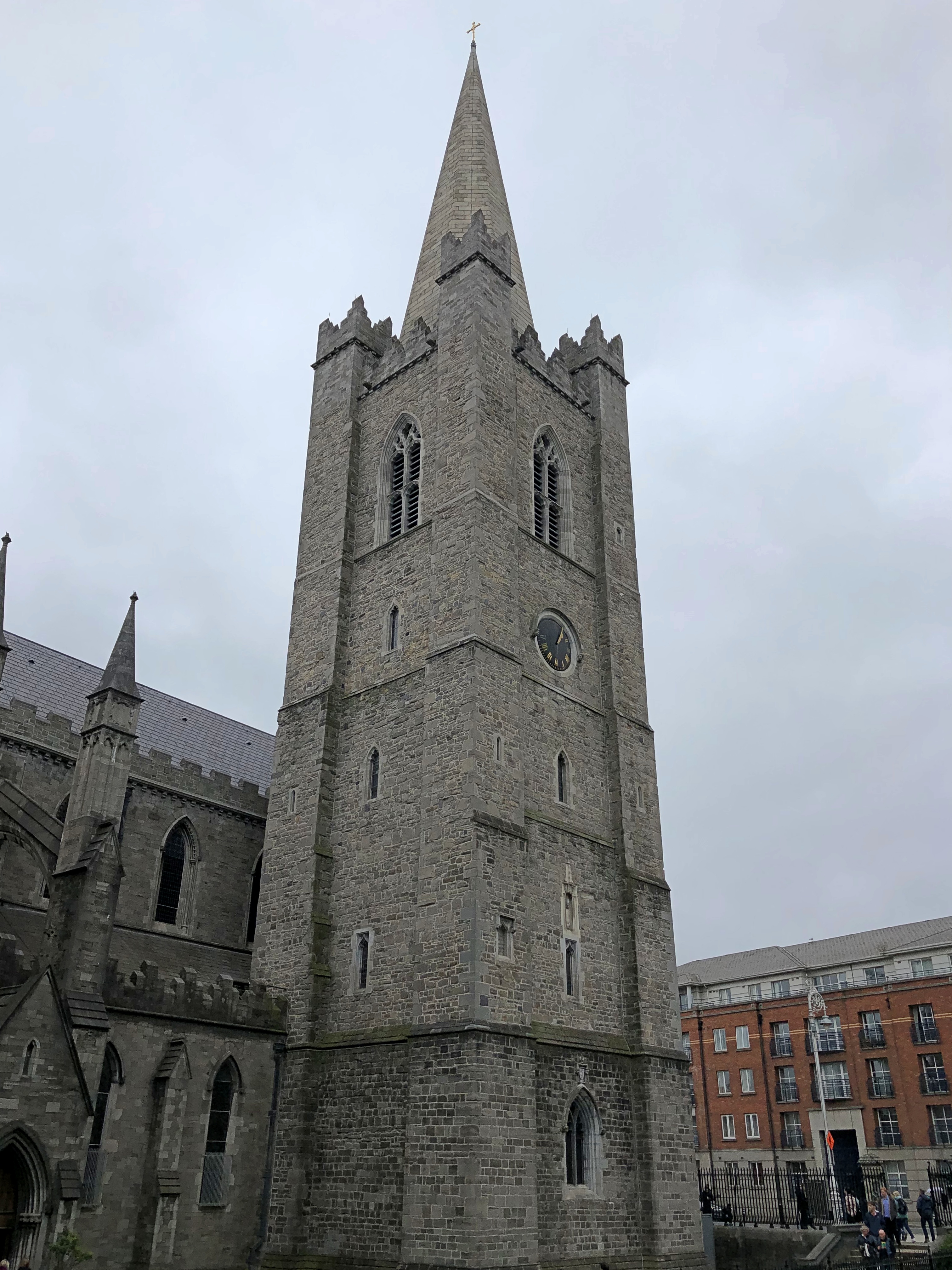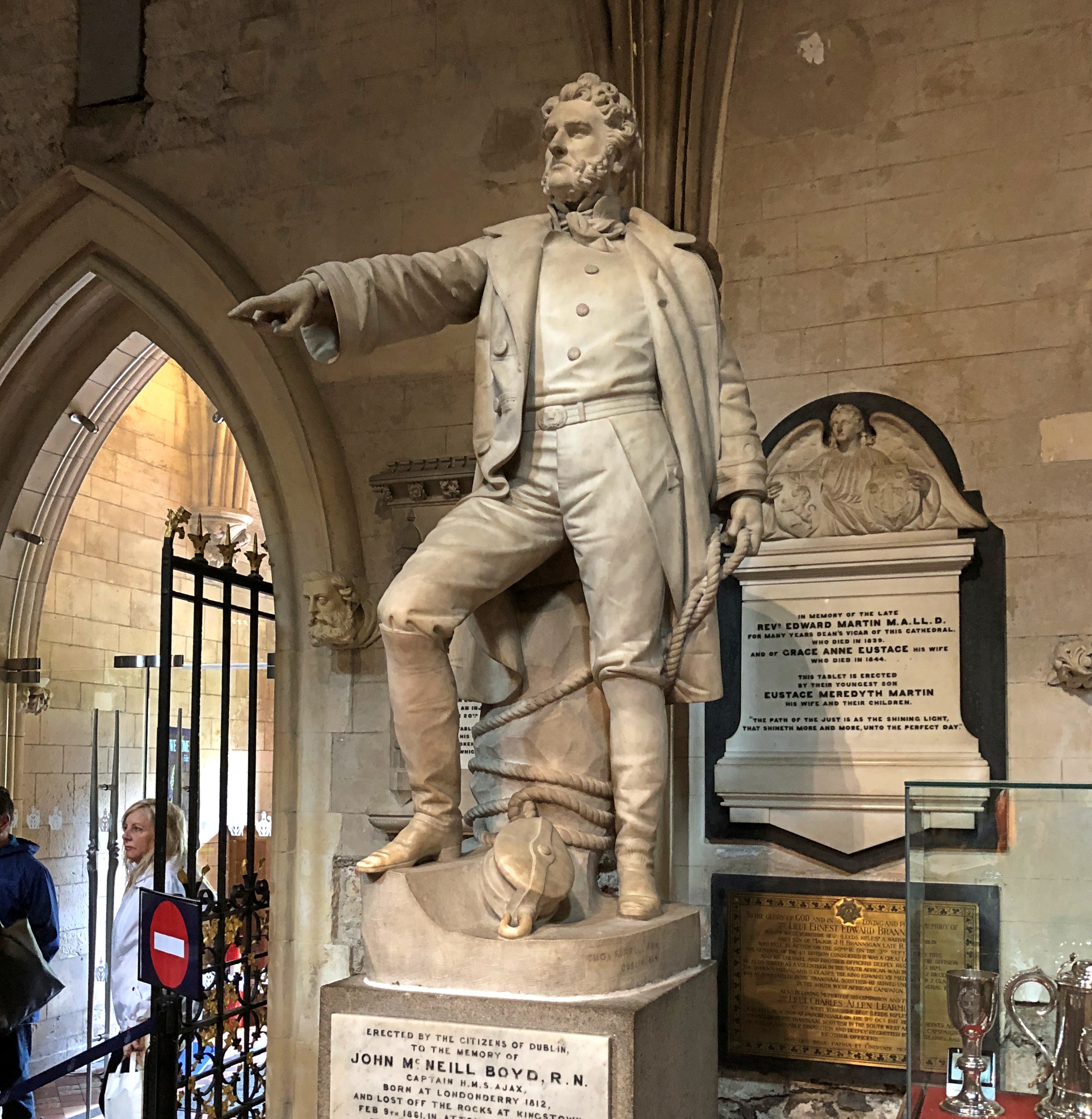A pause in posting till June 11 or so, when I’ll pick up with my own homage to Catalonia. I found it not nearly as dangerous as Orwell, and I’m glad. Got a few things to do between now and then, in the fine early summertime of June.
I didn’t make an effort to see the Georgian townhouse doors so famed in tourist literature about Dublin, though I was curious enough to find out that, indeed, official tourism efforts about 50 years ago got the ball rolling on making people notice them.
Before that, the doors almost vanished, according to Irish Culture and Customs, as Ireland had its own period of Eisenhowerization, for its own reasons: “From the 1950s onwards, Georgian Dublin came under concerted attack by the Irish Government’s development policies. Whole swathes of 18th-century houses were demolished, notably in Fitzwilliam Street and St Stephen’s Green, to make way for utilitarian office blocks and government departments.
“Much of this development was encouraged by Ireland’s dominant nationalist ideology of that era, which wanted to wipe away all physical reminders of Ireland’s colonial past… However, thanks to a concerted effort by historians, architects, preservationists and the Irish Tourist Board, the architectural carnage came to a halt.”
I had another idea for a Dublin poster while walking around: Manhole Covers of Dublin.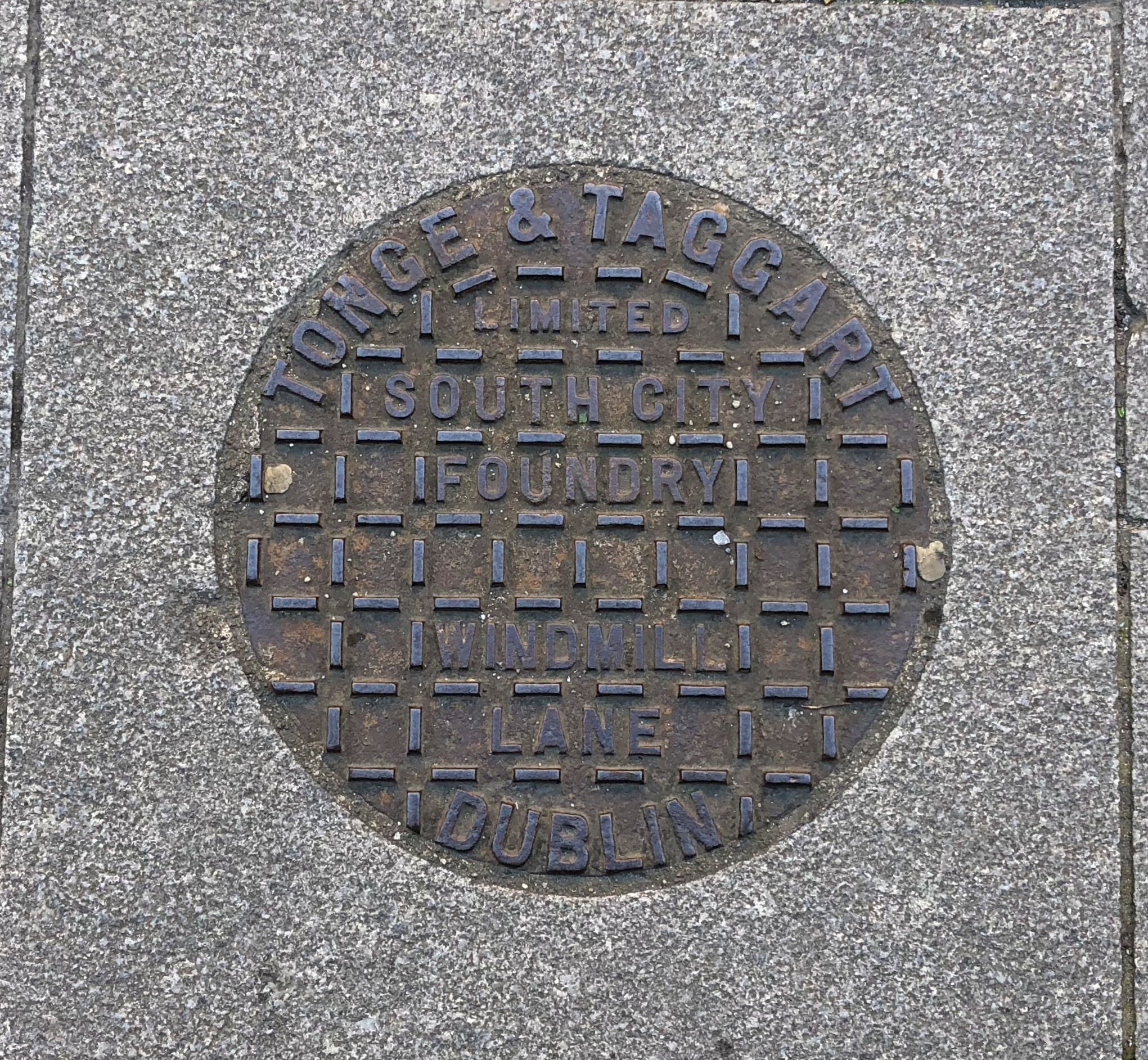

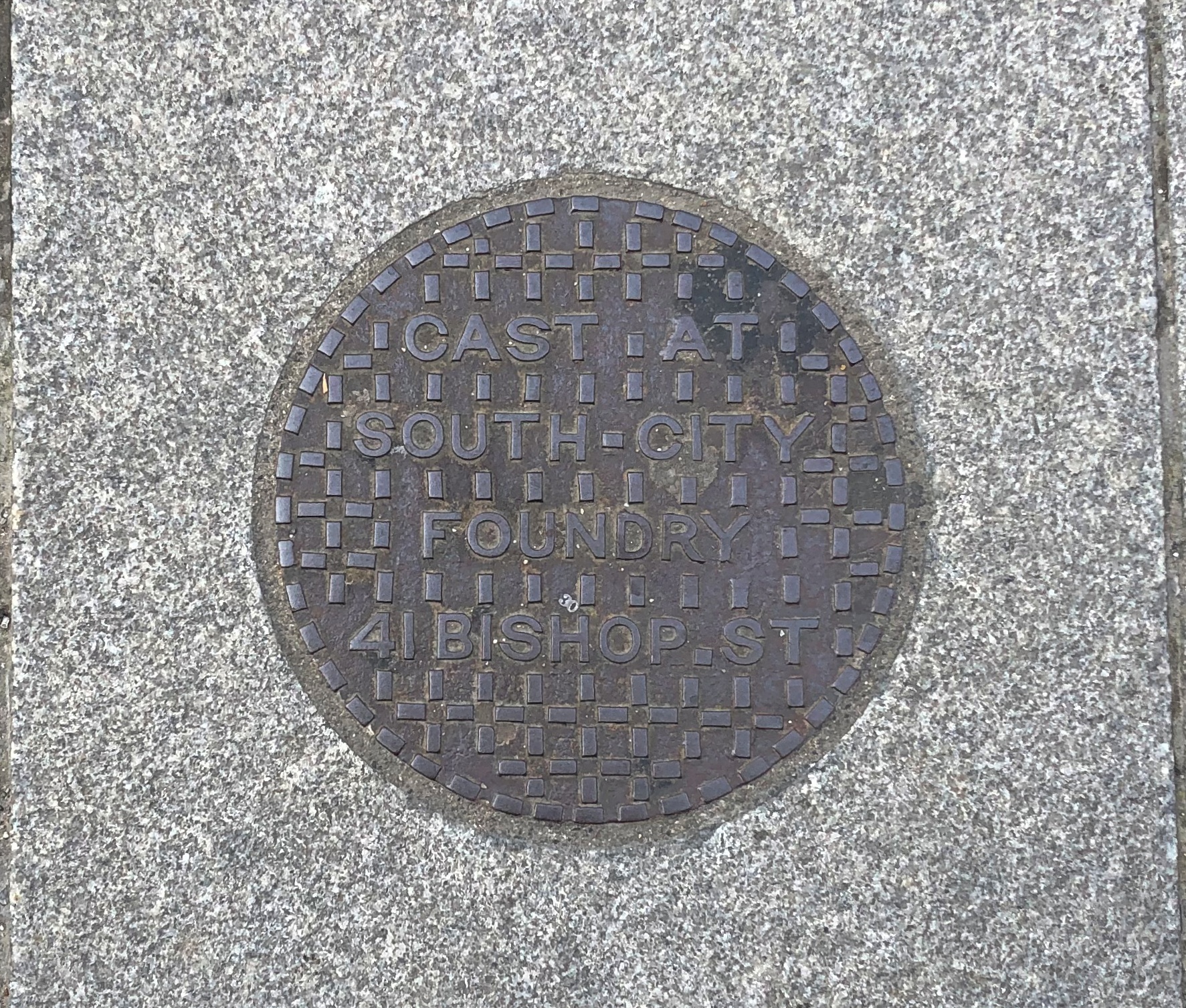
Even including non-manhole ironwork.

Aer Lingus provided our four flights on the recent trip: Chicago to Dublin to Barcelona and back again in reverse order, the last two legs on the same day. The airline’s use of Irish greens on the planes and in the planes, down to the wardrobe of its employees, is distinctive. One peculiarity, at least for the two intra-Europe flights: no boarding announcements of any kind. You were waiting around, and all at once around check-in time a line formed, which you joined, and Aer Lingus employees started checking people in.
I wouldn’t have minded hearing a few more announcements, so I could enjoy a bit more Irish English in its wonderful and varied lilt. A favorite: one of the flight attendants on the Barcelona-to-Dublin run looked, and sounded, like an older version of the main character of Derry Girls.
“Sorry, ya hav’ to put th’ wee bag under th’ seat in front o’ youse.”
Does Aer Lingus employ workers from Northern Ireland? Then again, my grasp of the nuances of Irish English is pretty weak, so more than likely the flight attendant wasn’t from Derry at all.
Shannon Airport, at least the parts we saw, which was a fair amount, is long on duty-free shopping, or shopping period, and well stocked with bars and coffee shops. As for actual places to eat, not so much. The Burger King on the second level before entering U.S. preclearance was popular, I suspect, not because travelers love Whoppers so much, but because there were so few other choices. El Prat Airport (Barcelona) had Shannon beat hands down in this regard.
I’d imagined that Aer Lingus (“air fleet” in Gaelic) was still a government-owned entity, but I’m not up on things. The carrier was privatized some years ago, and now is owned by the generically named International Airlines Group, which also owns British Airways, Iberia, BMI and Vueling.
On the ground in Dublin, one way to get around is Luas (“speed”), the light rail system, in operation only since 2004. Perhaps because of its original marshy setting, Dublin has no subways.
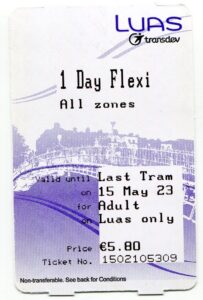 We acquired day passes for that purpose, a deal at €5.80 if you do much riding at all, and we did. We rode one line north as far as it went, just to see where it went — to a bland transit center, is where.
We acquired day passes for that purpose, a deal at €5.80 if you do much riding at all, and we did. We rode one line north as far as it went, just to see where it went — to a bland transit center, is where.
There’s no machine to check the ticket when you get on. It’s one of those random check systems, and until our second-to-last ride, no one ever checked. But then a couple of uniformed Luas employees showed up at one stop with their handheld scanners, did some checks (not quite everyone in the car), and then got off at the next stop.
Some Dublin street scenes.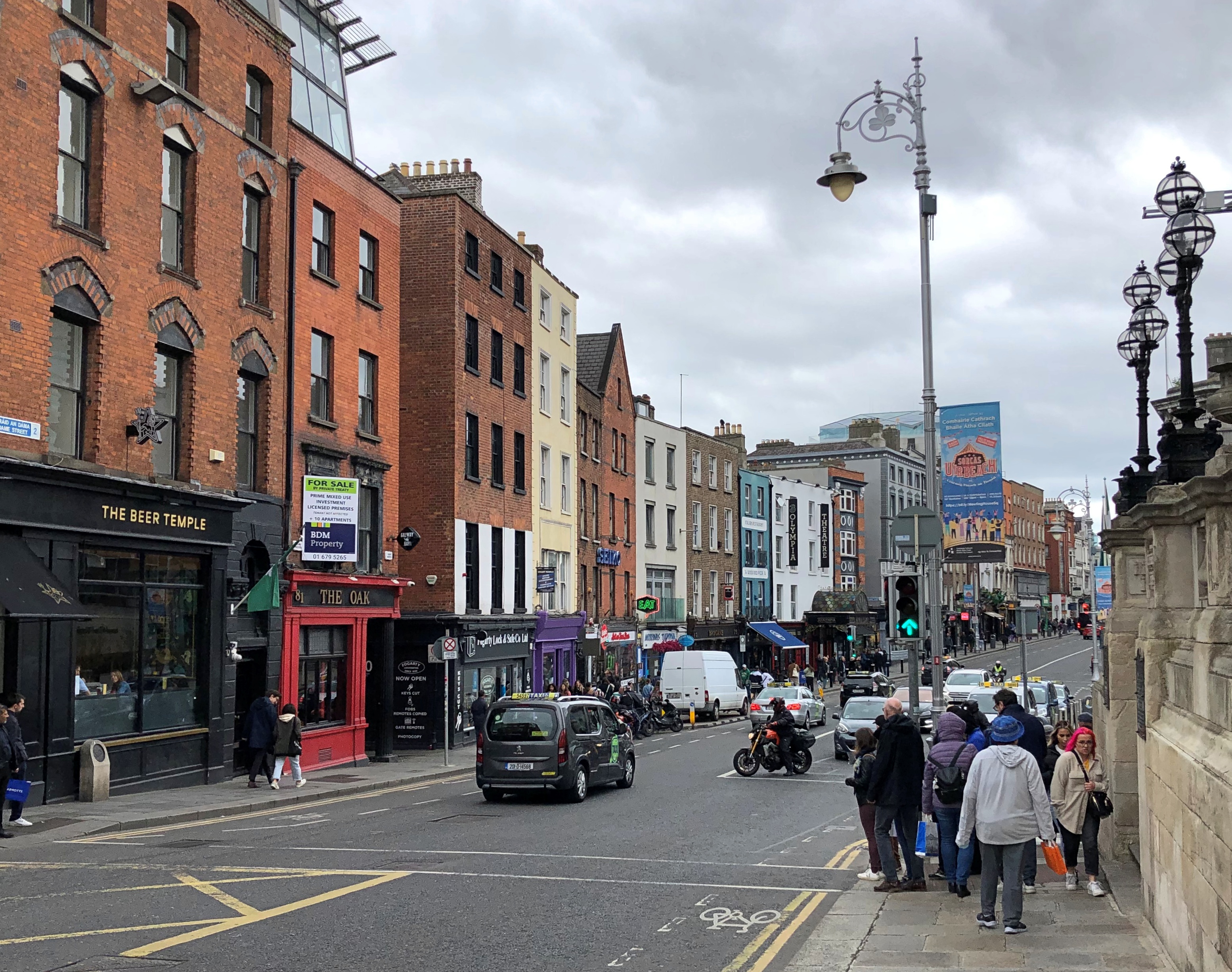


The cast iron Ha’Penny Bridge, built in 1816, whose name echoes a long-ago toll, and which tends to make its way onto postcards and other tourist items. Naturally we crossed it for views of the River Liffey.


Not all of the river in town is quite so picturesque. Near Phoenix Park.
The city once had a wall. Not much is left of it.
A little graffiti. I could have taken many more images.

Signs.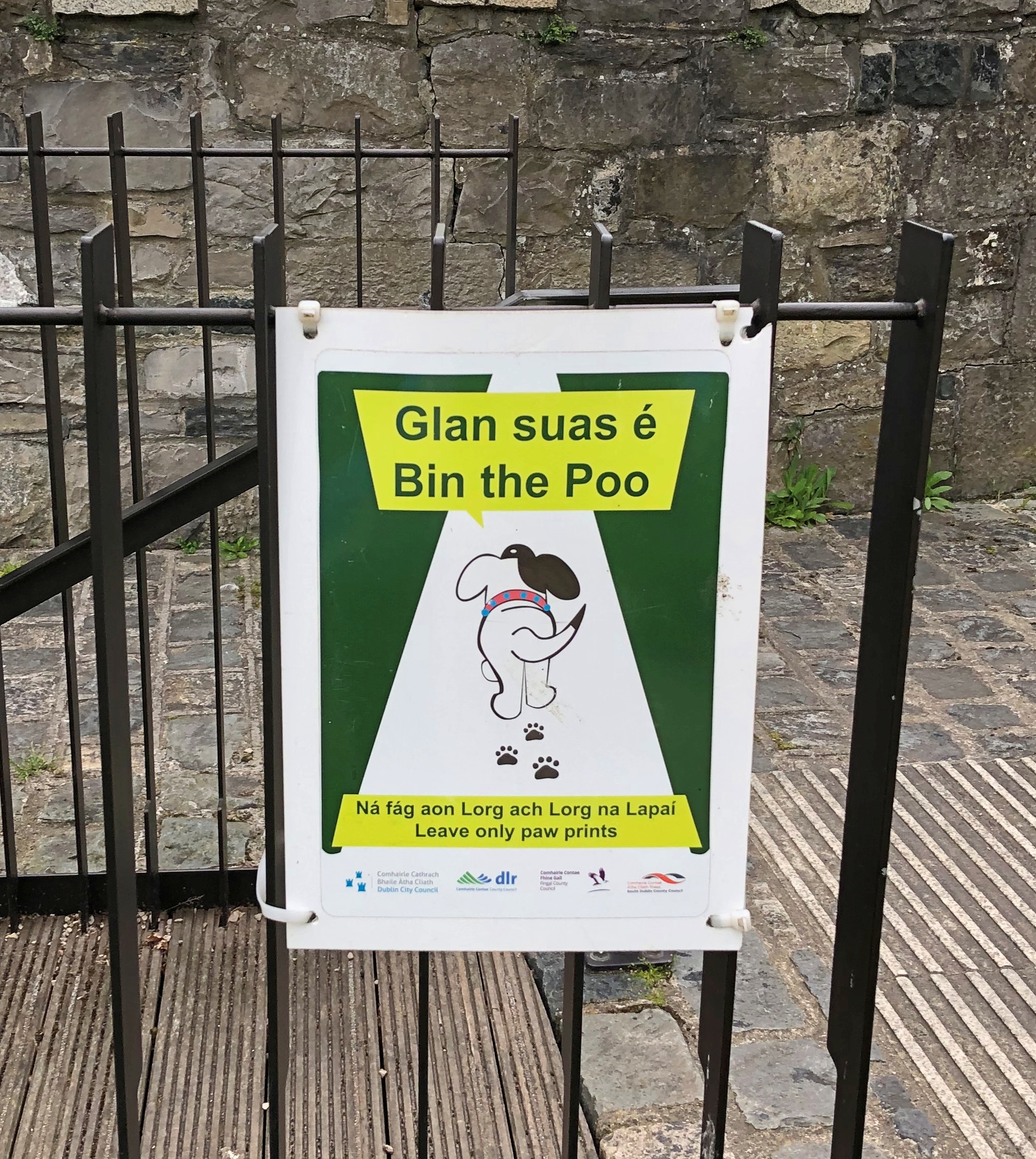

The last image I took in Ireland, of a last snack at the airport. Good crisps. Not the only snack food we found in Ireland. Our very first day, I saw a Yorkie Bar for sale and bought it immediately.
O’Donnells of Tipperary. We didn’t go to Tipperary. It’s a long way. Except not really. Nowhere is very far in Ireland, about eight of which could fit in Texas (the entire island, not just the Republic). Unless you have to walk.
I saw a highway sign denoting the road to Belfast as we headed for the Dublin airport, and I asked our driver how long it would take, on a good traffic day and not counting the border crossing, to reach Belfast. About an hour and a half, he said. San Antonio to Austin, I thought, except there’s never a good day for traffic on I-35.





